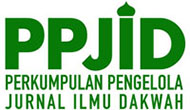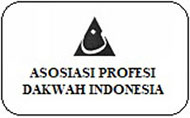Kredibilitas Komunikator Jurus Sehat Rasulullah di Kalangan Followers Instagram @Zaidulakbar (Communication Credibility of the Healthy Way of the Prophet on Instagram Followers @Zaidulakbar)
Abstract
This study aims to determine the correlation of the source credibility with the attitudes of Instagram account followers @zaidulakbar regarding the healthy style of Rasulullah (JSR). The method used in research is a quantitative method, with correlational studies aimed at expressing relationships between variables through correlational statistics. The sampling technique used was simple random sampling with a total sample of 100 followers. Research data was collected by distributing questionnaires containing structured questions and disseminated via the direct message (DM) feature on Instagram. The data obtained were analyzed using descriptive data analysis techniques and inferential statistical analysis with the Spearman Rank statistical calculation formula (Rs). The results showed that there is a high correlation between the source credibility with the attitude of Instagram account followers @zaidulakbar of 0.834. The source credibility component consists of expertise, trustworthiness, and attractiveness.
Keywords
Full Text:
PDFReferences
Abednego, A., & Triarini, D. (2016). Pengaruh Body Attractiveness Laki-laki Terhadap Pemilihan Pasangan Pada Perempuan Dewasa Muda di Daerah Rural dan Urban [Universitas Indonesia]. http://www.lib.ui.ac.id/naskahringkas/2016-06/S56534-Andreas Abednego Kristariyanto
Ahmad, M. Kh., & Harrison, J. (2007). Untapped potential: Cultural sensitivity-Islamic persuasive communication in health promotion programs. Global Communication and Development Conference, 16-21 October 2007, October, 16–21.
Alsakinah, N. (2018). Kredibilitas Komunikator Ustadz pada Kalangan Jamaah. Prosiding Manajemen Komunikasi, 642–647.
Andreassen, H.K., Bujnowska-Fedak, M.M., Chronaki, C. E. et al. (2007). European Citizens’ Use of E-Health Services: A Study of Seven Countries. BMC Public Health, 7(53). https://doi.org/doi.org/10.1186/1471-2458-7-53
Arafat, M. Y. (2018). Pengaruh Citra Tubuh Ideal Dan Daya Tarik Fisik Terhadap Kemampuan Interpersonal Pada Pria yang Berolahraga di Pusat Kebugaran atau Fitness Center di Samarinda Seberang. PSIKOBORNEO, 6(4), 748–762.
Ashfiah, A. N. (2019). Pengaruh Kredibilitas Ustadz Abdul Somad Terhadap Keputusan Jama’ah Untuk Mengikuti Kegiatan Dakwahnya Di Pekanbaru. JOM FISIP, 6(2), 1–10.
Assupina, M., Misnaniarti, & Rahmiwati, A. (2013). Analisis Implementasi Program Pengelolaan Penyakit Kronis (Prolanis) Pada Dokter Keluarga PT Askes Di Kota Palembang Tahun 2013. Jurnal Ilmu Kesehatan Masyarakat, 4 (03)(November), 254–261.
Azwar, S. (2010). Sikap Manusia Teori dan Pengukurannya. Yogyakarta: Pustaka Pelajar.
Braunsberger, K., & Munch, J. M. (1998). Source Expertise Versus Experience Effects In Hospital Advertising. JOURNAL OF SERVICES MARKETING, 12(1), 23–38.
BS. Ma’arif, Parihat., Yusuf, Umar., & S. (2019). Persuasive Da ’ wah Activities and the Socio- Demographic Factor. Advances in Social Science, Education and Humanities Research, 307(Sores 2018), 1–6.
Bulaeng, A. (2004). Metode Penelitian Komunikasi Kontemporer. Yogyakarta: Andi.
Cass, M. (2013). The New Adulthood. https://d3bzyjrsc4233l.cloudfront.net/django-summernote/2017-10-30/a3327efd-90f6-4a39-8bc6-1a4d837ba053.pdf
Clark, J. K., Wegener, D. T., Habashi, M. M., Evans, A. T., & Evans, A. T. (2012). Personality and Social Psychology Bulletin or Support on Message Scrutiny. Personality and Social Psychology Bulletin, 38(1), 90–100. https://doi.org/10.1177/0146167211420733
Conner, T., Brookie, K., Carr, A., Mainvil, L., & Vissers, M. (2017). Let Them Eat Fruit ! The Effect of Fruit And Vegetable Consumption on Psychological Well-Being in Young Adults : A Randomized Controlled Trial. PLoS ONE, 12(2), 1–19. https://doi.org/10.1371/journal.pone.0171206
Davenport, T. H., & Prusak, L. (2000). Working Knowledge: How Organizations Manage What They Know. Boston: Harvard Business Press.
Davis, S. L., Rives, L. M., & Maya, S. R. De. (2017). Introducing Personal Social Responsibility as A Key Element to Upgrade CSR. Spanish Journal of Marketing - ESIC, 21, 146–163. https://doi.org/10.1016/j.sjme.2017.04.001
Doyle, B. T. (2004). OBJECTIVE VS. SUBJECTIVE INFORMATION. www.barbaradoyle.com
E.Ayub, Moh., Muhsin MK., & Mardjoned, R. (2007). Manajemen Masjid (9th ed.). Jakarta: Gema Insani.
Fitzgibbon, M. L., Kong, A., & Tussing-Humphreys, L. (2014). Understanding Population Health From Multi-Level and Community-Based Models. In K. A. RIEKERT, J. K. OCKENE, & L. PBERT (Eds.), The HANDBOOK of HEALTH BEHAVIOR CHANGE (pp. 28–46). New York: Springer Publishing Company.
Gordon, R. ., Crosnoe, R., & Wang, X. (2013). Physical Attractiveness and The Accumulation of Social and Human Capital In Adolescence and Young Adulthood: Assets and Distractions. Monographs of the Society for Research in Child Development, 78(6), 1–137. https://doi.org/10.1002/mono.12060
Hariyanto. (2018). Relasi Kredibilitas Da’i Dan Kebutuhan Mad’u Dalam Mencapai Tujuan Dakwah. Tasâmuh, 16(2), 61–82.
Hidayat, A. S. (2013). Membangun Dimensi Baru Dakwah Islam: Dari Dakwah Tekstual menuju Dakwah Kontekstual. Jurnal Risalah, 24(2), 1–15.
Husin, A. F. (2014). Islam dan kesehatan. Islamuna, 1 (2), 194–209.
Ilham, R., Mohammad, S., & Syukriani Yusuf, M. N. (2019). Hubungan Tingkat Pengetahuan Dengan Sikap Perawat Tentang Perawatan Paliatif. Jambura Nursing Journal, 1(2), 96–102.
James T. Scarnati. (2013). Beyond Technical Competence: Honesty and Integrity. Career Development International, 2(1), 24–27.
Kareklas, I., Muehling, D. D., & Weber, T. J. (2015). Reexamining Health Messages in the Digital Age : A Fresh Look at Source Credibility Effects. Journal of Advertising, 44(2), 88–104. https://doi.org/10.1080/00913367.2015.1018461
Koening, H. G., McCullough, M. E., & Larson, D. B. (2001). Handbook of Religion and Health. New York: Oxford University Press.
Kriyantono, R. (2012). Teknik Praktis Riset Komunikasi. Jakarta: Kencana Prenada Media.
Lamm, Alexa J., Owens, Courtney T., Telg, Ricky W., & Lamm, K. W. (2016). Influence of Source Credibility on Agricultural Water Use Communication. Journal of Applied Communications, 100(3), 121–132.
Laranjo, L. (2016). Social Media and Health Behavior Change. In S. Syed-Abdul, E. Gabarron, & A. Y. S. Lau (Eds.), Participatory Health Through Social Media (pp. 83–111). Academic Press.
Lou, C., & Yuan, S. (2018). Influencer Marketing: How Message Value and Credibility Affect Consumer Trust of Branded Content on Social Media. Journal of Interactive Advertising. https://doi.org/10.1080/15252019.2018.1533501
Major, L. H., & Coleman, R. (2012). Source Credibility and Evidence Format: Examining the Effectiveness of HIV/AIDS Messages for Young African Americans. Journal of Health Communication: International Perspectives, 17(5), 515–531. https://doi.org/10.1080/10810730.2011.635771
Mubarak, W. (2011). Promosi Kesehatan Untuk Kebidanan. Jakarta: Salemba Medika.
Mulizar. (2017). In Memoriam Konsep Dakwah Dan Pemikiran Pakar Hadis; Prof. Dr. KH. Ali Mustafa Yaqub, MA. Jurnal Al-Hikmah, IX(14), 43–61.
Ohanian, R. (1991). The Impact of Celebrity Spokespersons’ Perceived Image on Consumers’ Intention to Purchase. Journal of Advertising Research, 31(1), 46–54.
Păceşilă, M. (2018). The Individual Social Responsibility: Insights From A Literature Review. MANAGEMENT RESEARCH AND PRACTICE, 10(1), 17–26.
Pangil, F., & Nasurddin, A. M. (2013). Knowledge and the Importance of Knowledge Sharing in Organizations. Conference on Business Management Research 2013. http://repo.uum.edu.my/16360/1/15.pdf
Parvanta, C. F., & Bass, S. B. (2020). Health Communication: Strategies and Skills for a New Era. Burlington MA: Jones & Bartlett Learning.
Perloff, R. M. (2017). The Dynamics of Persuasion (6th ed.). New York: Routledge.
Prasetyo, A. (2019). The Persuasive Da ’Wah Communication of KH Asyhari Marzuqi And Its Implications in Modern Life. INFORMASI, 49(1), 11–24.
Prawira W, R. Y., Mulyana, S., & Wirakusumah, T. K. (2012). Hubungan Karakteristik Brand Ambassador Honda Spacy Helm-In dengan Tahapan Keputusan Pembelian Konsumen. EJurnal Mahasiswa Universitas Padjadjaran, 1(1), 1–14.
Rahmadiana, M. (2012). Komunikasi Kesehatan: Sebuah Tinjauan. Jurnal Psikogenesis, 1(1), 88–94.
Rahmah, M. N. (2013). Kredibilitas Juru Dakwah sebagai Komunikator. Alhadharah Jurnal Ilmu Dakwah, 12(24), 1–13.
Rakhmat, Jalaluddin., & Ibrahim, I. S. (2017). Metode Penelitian Komunikasi. Bandung: Simbiosa Rekatama Media.
Rakhmat, J. (2019). Psikologi Komunikasi. Bandung: Simbiosa Rekatama Media.
Riswandi. (2013). Psikologi Komunikasi. Yogyakarta: Graha Ilmu.
Rooney, C., Mckinley, M. C., & Woodside, J. V. (2013). The potential role of fruit and vegetables in aspects of psychological well-being : a review of the literature and future directions Proceedings of the Nutrition Society. Proceedings of the Nutrition Society, 72, 420–432. https://doi.org/10.1017/S0029665113003388
Schindler, S., Reinhard, M., Grünewald, F., & Messner, M. (2017). ‘I Want To Persuade You!’ – Investigating The Effectiveness of Explicit Persuasion Concerning Attributes of The Communicator and The Marketing Campaign. Social Influence, 1–13. https://doi.org/10.1080/15534510.2017.1378125
Schlundt, D. G., Franklin, M. D., Patel, K., McClellan, L., Larson, C., Niebler, S., & Hargreaves, M. (2008). Religious Affiliation, Health Behaviors and Outcomes. American Journal of Health Behavior, 32(6), 714–724. https://doi.org/10.5555/ajhb.2008.32.6.714
Shell, R., & Moussa, M. (2007). The Art of Woo: Using Strategic Persuasion to Sell Your Ideas. New York: Penguin Group.
Silk, K. J., Atkin, C. K., & Salmon, C. T. (2011). Developing Effective Media Campaigns For Health Promotion. In T. L. Thompson, R. Parrott, & J. F. Nussbaum (Eds.), The Routledge Handbook of Health Communication. New York: Taylor & Francis.
Sitompul, S. (2018). Hubungan Antara Kesamaan (Similarity) Dengan Pembentuk Persahabatan Pada Remaja Di Kelurahan VII Tarutung [Universitas Medan Area]. http://repository.uma.ac.id/bitstream/123456789/9845/1/Syarah Sitompul - fulltext.pdf
Sugiyono. (2010). Statistika Untuk Penelitian. Bandung: Alfabeta.
Sundary, D. A., & Fahmi, M. H. (2018). Hubungan antara Komunikasi Dakwah Ustadz Evie Effendie dengan Pengetahuan Keagamaan Sisterfillah Bandung. Prosiding Hubungan Masyarakat, 719–722.
Telg, Ricky., Irani, T., Monaghan, P., Chiarelli, C., Scicchitano, M., & Johns, T. (2012). Preferred Information Channels and Source Trustworthiness : Assessing Communication Methods Used in Florida ’ s Battle Against Citrus Greening Preferred Information Channels and Source Trustworthiness : Assessing Communication Methods Used in Florida ’ s. Journal of Applied Communications, 96(1), 42–53.
Venus, A. (2012). Manajemen Kampanye: Panduan Teoretis dan Praktis. Bandung: Simbiosa Rekatama Media.
Wahl, D. ., Villinger, K., König, L. ., & Al, E. (2017). Choices Are Happy Food Choices: Evidence From A Real Life Sample Using Smartphone Based Assessments. Sci Rep, 7. https://doi.org/10.1038/s41598-017-17262-9
Waters, E. A., McQueen, A., & Cameron, L. D. (2014). Perceived Risk and Health Risk Communication. In H. E. Hamilton & W. S. Chou (Eds.), The Routledge Handbook of Language and (pp. 47–60). New York: Routledge.
Wawan, A., & Dewi, M. (2010). Teori dan Pengukuran Pengetahuan Sikap dan Perilaku Manusia : Dilengkapi Contoh Kuesioner. Yogyakarta: Nuha Medika.
Westerman, D., Spence, P. R., & Van Der Heide, B. (2014). Social Media as Information Source : Recency of Updates and Credibility of Information ∗. Journal of Computer-Mediated Communication, 19, 171–183. https://doi.org/10.1111/jcc4.12041
Widianto, F. R., & Pratiwi, F. D. (2015). AUDIENCE ADAPTATION DALAM GAYA ( Studi Deskriptif Kualitatif Trend Jilboobs Pada Mahasiswi Yogyakarta ). Jurnal Komunikasi PROFETIK, 8(2), 81–93.
Yasin, B., & Ozen, H. (2011). Gender Differences in The Use of Internet for Health Information Search. EGE ACADEMIC REVIEW, 11(2), 229–240. https://doi.org/10.21121/eab.2011219567
Ybarra, M. L., & Suman, M. (2006). Help seeking behavior and the Internet : A national survey. International Journal of Medical Informatics, 75, 29–41. https://doi.org/10.1016/j.ijmedinf.2005.07.029
DOI: http://dx.doi.org/10.24014/jdr.v31i1.9527
Refbacks

This work is licensed under a Creative Commons Attribution-ShareAlike 4.0 International License.
Editorial Office:
2nd Floor, Building of Faculty of Da'wah and Communication, Universitas Islam Negeri Sultan Syarif Kasim Riau. Jl. HR Soebrantas Km 15, Simpangbaru, Tampan, Pekanbaru
Email : jurnalrisalah@uin-suska.ac.id


















